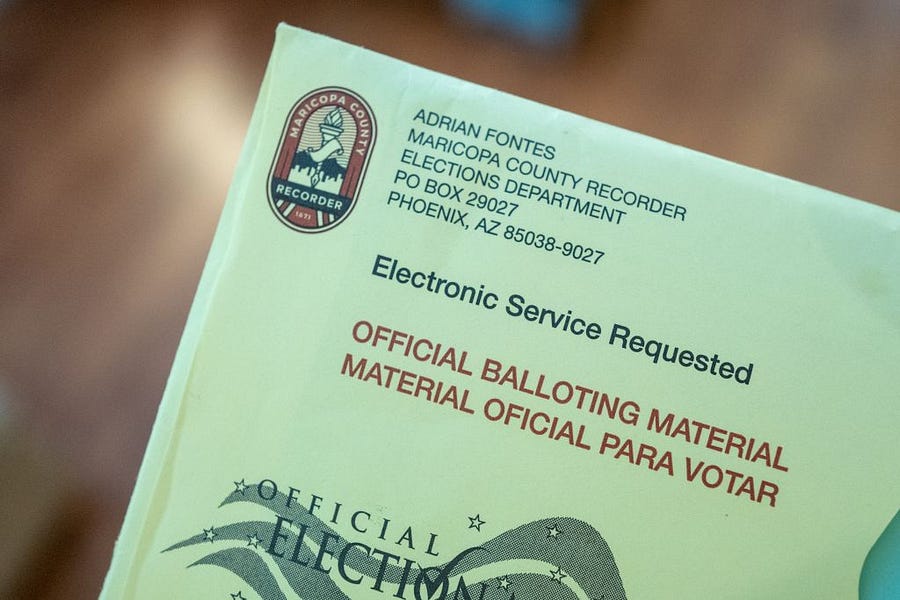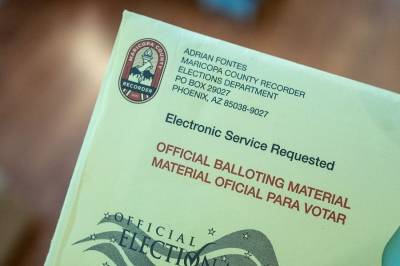On July 19, Arizona GOP Chairwoman Kelli Ward—who has has pushed baseless voter fraud claims about the 2020 election in Arizona—tweeted a picture of an early voting mailing envelope from Maricopa County, highlighting a small window on the back, asking: “Hey, Maricopa County: why is this window in the envelope needed when ballots are mailed out? ”
Ward’s tweet sparked a series of tweets alleging that the envelope window is evidence of voter fraud. More specifically, Twitter users alleged that the window shows a voter’s party affiliation, which according to some, means the state knows “which ballots to destroy.”
One Twitter user who retweeted Ward’s tweet, wrote in response: “So, they know which one’s to throw out without opening.”
Another wrote: “Maricopa county is the most corrupt through and through we have seen. they have no interest in legal elections, they are mastering cheating.”
It wasn’t just Twitter users spearing misinformation about the window on the back of the early voting mailing envelope, though.
The Gateway Pundit recently published a false story, claiming that: “Maricopa County Mail-In Ballots Clearly Reveal Party Affiliation Which Is Illegal.” The Gateway Pundit published images of these same early mail-in ballots as evidence they are “sparking concerns among voters whose party affiliation is clearly displayed in the corner of their envelope.”
But the envelope window is not evidence of voter fraud, or any suspicious activity.
Stephen Richer, Republican Maricopa County recorder, addressed the rumor that the windows on the early voting ballot mailing envelopes are suspicious, in a Twitter thread, explaining that outbound envelopes have been this way for 20 years. Richer noted that the window “does not reveal your party, just which ballot style you are voting in.” Party affiliation is also a matter of public record, he said. “Anyone who wants to know your party can just fill out an easy [public records request] to my office.”
Richer explained that ballots have been this way for as long as they have because “we scan that barcode after the insert process to make sure [the ballot] inserted correctly and the voter is getting the right type of ballot.”
Plus, state law “requires us to print the party name and color on the ballot,” Richer said. “And that information must be at the top of the ballot. That code cannot go anywhere in the tabulation zone and must be at the top of the ballot. There is a limited amount of real estate on the header.”
In an email to The Dispatch Fact Check, Benny White, an elections expert and data analyst in Tucson, explained: “As these ballots and envelopes are being put together by the printer (using automated high speed machines), there is a possibility that the ballots and the envelopes could get out of sync and a large number of ballot/voter mismatch could occur if each one were not checked by the packaging system.”







Please note that we at The Dispatch hold ourselves, our work, and our commenters to a higher standard than other places on the internet. We welcome comments that foster genuine debate or discussion—including comments critical of us or our work—but responses that include ad hominem attacks on fellow Dispatch members or are intended to stoke fear and anger may be moderated.
With your membership, you only have the ability to comment on The Morning Dispatch articles. Consider upgrading to join the conversation everywhere.